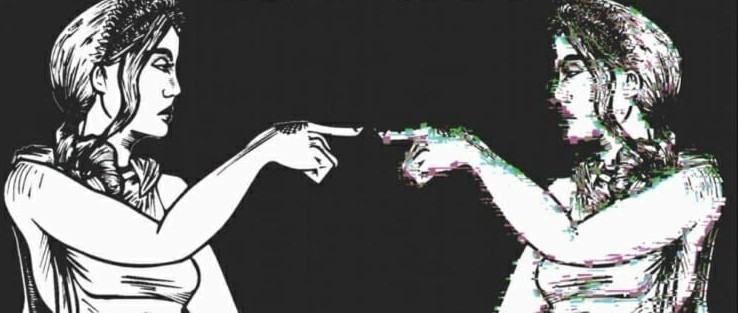by Sean Kelly, Managing Editor, Classical Wisdom
She’s probably the single most famous woman from all of Greek mythology.
We think we know the tale – the most beautiful woman in the world, and the enormous war that was fought over her.
Yet her story is much more complex than many may imagine. Was she really the face that launched a thousand ships?
The most well-known version of the Helen of Troy myth is what we get from the Epic Cycle, particularly Homer in the Iliad and the Odyssey. After visiting Menelaus, King of Sparta, the young Trojan prince Paris absconded with the Spartan king’s wife, Helen, and took her to Troy. In retribution, and in outrage at the insult to xenia, Menelaus and his brother King Agamemnon launched a vast expedition against the city of Troy, leading to a siege which lasted for ten years. Following the fall of Troy, Menelaus and Helen returned to Sparta, where they lived as king and queen once more.
That’s the most commonly known version of the myth. Yet there is another, very different version of this story.
The Greek lyric poet Stesichorus, one of the Nine Lyric Poets of ancient Greece, is attributed with creating an alternative view of the Trojan war. While much of his poetry is lost, a key segment survives in quotation, regarding Helen of Troy:
‘It is not true, the tale. You did not go in the well-benched ships; you did not come to Pergama of Troy.’
In Stesichorus’ version of the myth, it was not really Helen that was taken to Troy by Paris. Rather, Helen was replaced by an eidolon – a sort of ancient Greek version of a phantom. The eidolon is a completely convincing doppelgänger of the Spartan queen, fooling all who see it, but it is not really her. The real Helen was spirited away by the gods to Egypt, where she lived for the whole duration of the Trojan War. Here she lived under the protection of the Egyptian King Proteus, while the eidolon resided in Troy. None of the Trojans nor the Achaeans knew the truth, and the war was fought, essentially over nothing.
This is the version of the myth that Euripides – the most experimental and daring of the three surviving Greek tragedians – used as the basis of his play Helen. Euripides was also influenced by the Encomium of Helen by the Greek Sophist Gorgias, which expressed similar ideas. When we meet Euripides’ Helen, she is a painfully isolated figure, all too aware of the events of the Trojan war, and moreso, of the blame wrongly attributed to her. She cries:
O Troy, city of sorrow, for deeds never committed you have perished and suffered a piteous end!
The play focuses on the distinction between nomos – the name of something, and physis – the reality of something. It’s an exploration of how what people say about us can conjure up an image that is completely removed from the reality of who we are, and yet remain a potent force. Helen knows that the Greeks consider her to be an adultress, when in reality, she has been completely faithful to her husband. She knows she is blamed for the vast number of deaths in the Trojan War, when she truly had nothing to do with it.
The play also follows Menelaus on his homecoming – or nostos – following the Trojan War. Newly shipwrecked in Egypt, Menelaus is now a man who looks like a beggar, claiming to be a king, and unaware of how close he is to finding his real wife. Greek drama is famous for its recognition scenes, and this play features a moving one, when both members of the married couple are baffled and overwhelmed to be in each other’s presence again.
Despite the tenderness of their reunion, all is not well. Helen’s protector King Proteus has died, and his son Theoclymenus plans to swiftly make her his bride, believing reports that Menelaus died in the shipwreck. This Euripides play belongs alongside his other ‘escape tragedies’ like Iphigeneia Among the Taurians, or his lost play on the Andromeda myth. These are somewhat removed from what we typically think of as ‘tragedies’. While they were performed on the same stages as the famous tales of Oedipus or the House of Atreus, they are perhaps closer to a medieval romance: tales of adventure and love, set in faraway lands, with a villainous tyrant lurking.
The play ends with the appearance of Castor and Pollux – the Dioscuri. They act as a deus ex machina in the play, resolving the conflict, and ensuring that Helen and Menelaus freely escape. In a play so concerned with how misleading a name can be, it is ironic that these characters have a much more famous name. Elsewhere in myth, they are turned into stars and become a costellation, twins known as the Gemini to the Romans. While they are Helen’s brothers, perhaps the more relevant detail is the fact that they are twin brothers. It is perhaps a fitting image for the drama to end on – two who are alike, and yet not alike.












One comment
I think Edward John Moreton Drax Plunkett, 18th Baron of Dunsany (1878-1957), deserves his say on Helen:
“And were you pleased?” they asked of Helen in Hell.
‘Pleased?’ answered she, ‘when all Troy’s towers fell,
And dead were Priam’s sons, and lost his throne,
And such a war was fought as none had known,
And even the gods took part, and all because of me alone?
Pleased? I should say I was!’”
Our apologies, you must be logged in to post a comment.